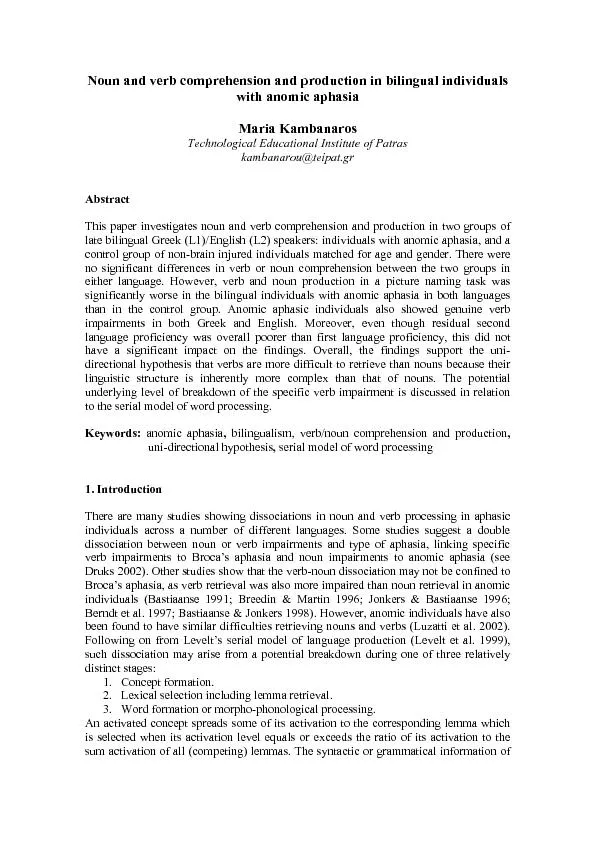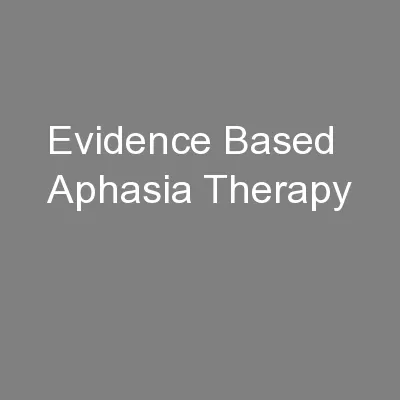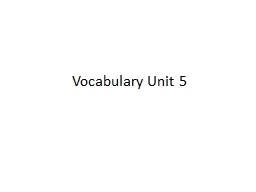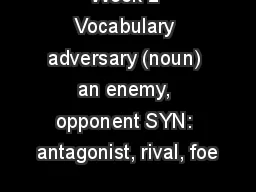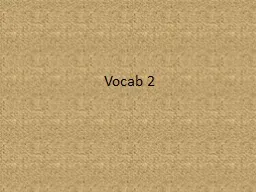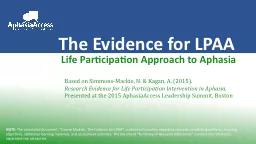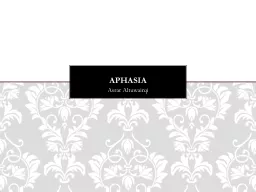PDF-with anomic aphasia This paper investigates noun and verb comprehensio
Author : danika-pritchard | Published Date : 2016-05-10
Noun and verb comprehension and production the lemma becomes available upon its selinformation about grammatical properties like their syntactic category eg noun
Presentation Embed Code
Download Presentation
Download Presentation The PPT/PDF document "with anomic aphasia This paper investiga..." is the property of its rightful owner. Permission is granted to download and print the materials on this website for personal, non-commercial use only, and to display it on your personal computer provided you do not modify the materials and that you retain all copyright notices contained in the materials. By downloading content from our website, you accept the terms of this agreement.
with anomic aphasia This paper investigates noun and verb comprehensio: Transcript
Download Rules Of Document
"with anomic aphasia This paper investigates noun and verb comprehensio"The content belongs to its owner. You may download and print it for personal use, without modification, and keep all copyright notices. By downloading, you agree to these terms.
Related Documents

